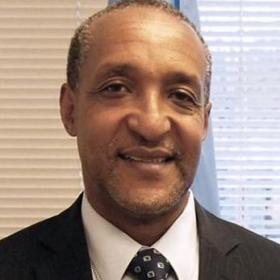December 2022 - You are accessing an archived version of our website. This website is no longer maintained or updated. The Sustainable Development Knowledge Platform has been migrated here: https://sdgs.un.org/
December 2022 - You are accessing an archived version of our website. This website is no longer maintained or updated. The Sustainable Development Knowledge Platform has been migrated here: https://sdgs.un.org/
The theme of the 2017 High-level Political Forum on sustainable development will be “Eradicating poverty and promoting prosperity in a changing world”, which is also a central promise of the 2030 Agenda for Sustainable Development. In the lead-up to the 2017 HLPF, weekly blogs by representatives of Member States, UN system, and major groups and other stakeholders will be featured in this series to present various perspectives on this theme. The role of SDGs 1, 2, 3, 5, 9, 14, and 17 will also be highlighted, as these goals will be in focus at the 2017 HLPF discussions.
Click here to see all the HLPF 2017 blog entries

H.E. Mr. Macharia Kamau, Co-Chair of the STI Forum and Permanent Representative of the Republic of Kenya to the United Nations
Science, Technology and Innovation (STI) are game changers for the Sustainable Development Goals (SDGs). Scientific knowledge underpins many of the SDG targets – in addition, the rapidly accelerating pace of research, technology and innovation makes them vital for implementation as well. Indeed, at a time when the rate of change in these areas is seen to be exponential, and when innovation is happening across the world, the scope and scale of their impact on the SDGs can be unrivalled.
As a result, the following questions have become more urgent than ever before:
How can we best harness these developments for their transformative, positive impacts on people and planet?
How can we overcome barriers to scaling up?
How can we ensure that these rapid developments help address gaps in human development – rather than perpetuate them?
How can we connect actors across the national and global innovation ecosystems to make the most of their potential?
I started my second year as the co-Chair of the Multi-stakeholder Forum on Science, Technology and Innovation (STI Forum) with these questions at the top of my mind. . The Forum intends to harness the power of STI in practical ways for achieving the high ambitions outlined in the 2030 Agenda on Sustainable Development and the Addis Ababa Action Agenda. Both through mandate and timing, the Forum also offers an opportunity to link its outcomes and recommendations to the annual review of the 2030 Agenda at the global level, in the High Level Political Forum (HLPF) scheduled for July at the United Nations in New York.
This year’s Forum (held over 15-16 May in New York) will therefore maintain a special focus on those SDGs that will also come up for in-depth review at the HLPF – Goals 1, 2, 3, 5, 9 and 14. Or, in brief, eradicating poverty; ending hunger; ensuring healthy lives for all; achieving gender equality; building resilient infrastructure, promoting inclusive and sustainable industrialization and fostering innovation; and conserving and sustainably using the oceans and other marine resources.
STI, by its very nature, need not fit exclusively into one or the other of these goals, or their associated targets. The Forum will therefore also look at interlinkages across the different objectives of Agenda 2030, and broader issues such as those connected to national innovation capacities; or the social, economic and environmental changes stemming from increasing automation at work.
Working closely with Dr. Vaughan Turekian, my colleague and fellow co-Chair, we hope to bring to you, for a second year in a row, an open-space for participation and information sharing, a community for match-making and scaling-up, and most importantly, a collaboration platform to demonstrate concrete solutions that can spark the imagination of innovators, policy makers, academics, business people and civil society actors everywhere.
Our programme, which runs from 10 am to 6 pm on both days, will be webcast live. In addition, we are offering other avenues for your engagement and participation:
A carefully selected set of side events will be organized during lunch breaks and evenings on both days. These side events, organized by different stakeholders, bring together multiple partners to addressing some of the guiding questions of the Forum through a sharing of diverse experiences and perspectives. A detailed side event programme will be posted on our website in a couple of days.
Over 125 candidates from across the world answered the call for innovations and twelve of them, selected through a competitive ranking process for presenting their stories. While these twelve innovators will be given a stage to pitch their ideas at the STI Forum itself, the Exhibition in the Visitors’ Lobby will give you a chance to connect with them and learn more about their enterprising work.
I am delighted that my colleague, the President of the General Assembly, is convening a special High Level Event on May 17, immediately following the STI Forum. Leading innovators from the major corporations of the world will meet to discuss how emerging technologies can transform efforts towards the achievement of the objectives of the 2030 Agenda.
I hope you will share my sense of excitement about the STI-Forum and join us at one of the many associated events.